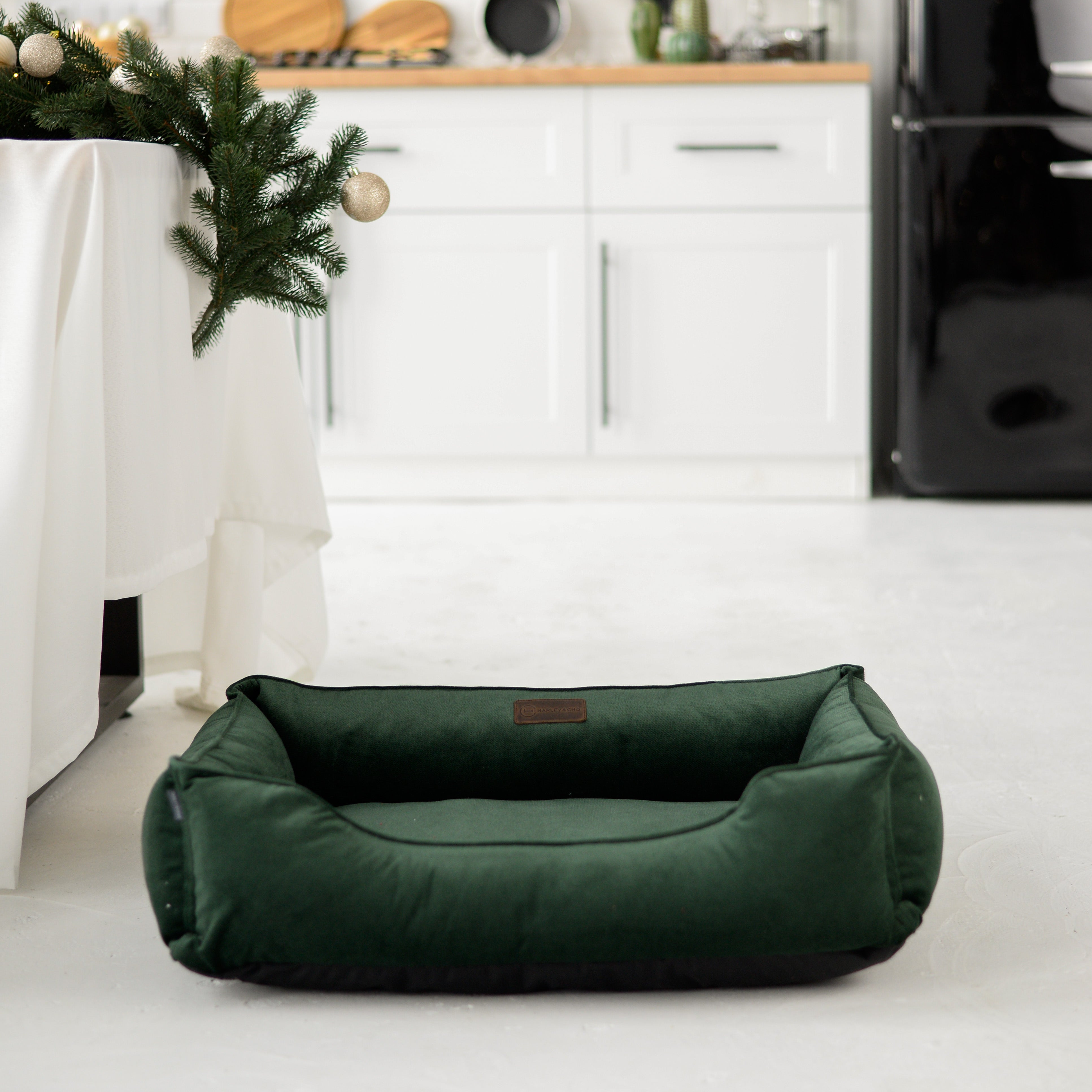Welcome to dog parenthood! It’s messy, chaotic, and full of unconditional love, and sleepless nights. But don’t worry, we’ve got you. Just like human babies, puppies need proper sleep routines to grow into happy, healthy adults. And one of the most important parts of that routine? Picking the perfect puppy bed.
Puppy Sleep Needs by Age
Puppies need a lot of rest. According to the AKC, here’s a breakdown of their sleep needs by age:
- Under 16 weeks: 18–20 hours/day
- 4–12 months: 16–18 hours/day
- 12–24 months: 14–16 hours/day
For comparison, adult dogs average 14–16 hours daily. This means your little fluffball will sleep through most of their early life making the right pet bed even more essential.

Why Sleep Matters for Puppies
- A well-rested pup is easier to train, more balanced emotionally, and less likely to chew your favorite shoes. Poor sleep, on the other hand, can lead to hyperactivity, anxiety, and destructive behavior. Creating a consistent sleep environment with a supportive puppy bed helps set your dog up for success.
Creating the Perfect Puppy Sleep Setup
Dogs, like humans, thrive on routine and comfort. Many puppies enjoy sleeping close to their humans, but not everyone wants a dog in their bed long-term. That’s where having the right dog bed makes all the difference.
- Place the puppy bed near your own so your dog still feels secure.
- For small breeds, a small dog bed provides just the right level of coziness.
- For growing pups or larger breeds, consider a large dog bed that allows them to stretch and settle comfortably.
Embrace Social Sleeping
Many mammals, including humans and dogs, thrive on social sleep. That warm, fuzzy feeling of someone snoring next to you (minus the drool) is scientifically proven to improve REM sleep—for both humans and their dogs.For many small breeds, sharing the bed can be an optimal choice. They tend to be more anxious and often need extra care. Larger dogs, however, are usually better at managing their emotions, and if they move into your bed, they might end up disrupting your sleep.
For puppies, this closeness replicates the comfort they felt with their litter. But before you let that little furball crawl into bed, think long-term. If you’re okay with sharing your bed for the next decade or two, great! If not, here’s how to create a cozy, independent sleep environment:
- The bedroom should be dark, quiet, and cool—ideal conditions for both dogs and humans.
- Place the dog bed as close to your bed as possible, so you can reach down and touch your puppy, so they can still feel connected.
- For restless pups, try placing their bed inside a crate and covering it with a breathable cloth to create a cozy, den-like atmosphere. If the crate is close enough for you to reach from your bed, even better—it adds an extra layer of comfort for your pup.
- If the adoption process takes some time, consider leaving a towel or an old T-shirt with the breeder or shelter. Let the item absorb the comforting scent of the puppy’s mom and littermates. Once your puppy comes home, place it in their bed—the familiar smell will help them feel calm and secure in their new environment.
How to Choose the Right Puppy Bed
Not all dog beds are created equal. Here’s what to look for:
- Material: Puppies are accident-prone, so a washable dog bed is a lifesaver. Removable covers make cleanup easy and help the bed last longer.
- Style: If you want your pup’s sleep space to look chic in your home, designer dog beds can combine style with comfort.
- Sustainability: For eco-conscious pet parents, an eco-friendly dog bed is a smart choice—made with safe, durable, and planet-friendly materials.
- Size: Match the bed to your puppy’s current size. While a giant large dog bed may look cozy, a snug fit helps younger pups feel secure. Upgrade as they grow.

Stick to a Sleep Schedule
Puppies are creatures of habit. Sync their bedtime with yours to create consistency. If you’re a 9 PM early bird, your puppy should also settle down by then. Night owls? Adjust accordingly.
Pro tip: Very young pups (8–12 weeks) will need 2–3 potty breaks at night. By 16 weeks, they’ll likely be sleeping through the night—or close to it.
Wind-Down Time
Just like with human babies, avoid overstimulating your pup before bedtime. Skip the running, fetch, and tug-of-war—stick to gentle petting and cozy snuggles instead.
Napping 101: Daytime Sleep Tips
Daytime naps are just as important as nighttime sleep. Puppies need calm, quiet spaces to recharge. Set up a cozy nap station in a low-traffic area. If your puppy struggles to relax, try this:
- Lead them gently to their bed.
- Sit nearby and stroke their back or speak softly.
- Add a shirt or towel with your scent to soothe them.
Over time, they’ll associate their nap zone with safety and relaxation.

Taupe Corduroy Removable Covers Dog Bed
Final Thoughts
Helping your puppy sleep through the night isn’t just about their comfort—it’s about yours too. By choosing the right pet bed, whether it’s a practical washable dog bed, a chic designer dog bed, a sustainable eco-friendly dog bed, or a cozy small dog bed, you’re investing in your pup’s well-being.
The right sleep setup will give your puppy the comfort they need to recharge, grow, and thrive—while giving you the peaceful nights you deserve.
References
A Summary of Canine Sleep Behaviour: Early Findings From The Generation Pup Cohort Study
Developmental features of sleep electrophysiology in family dogs








